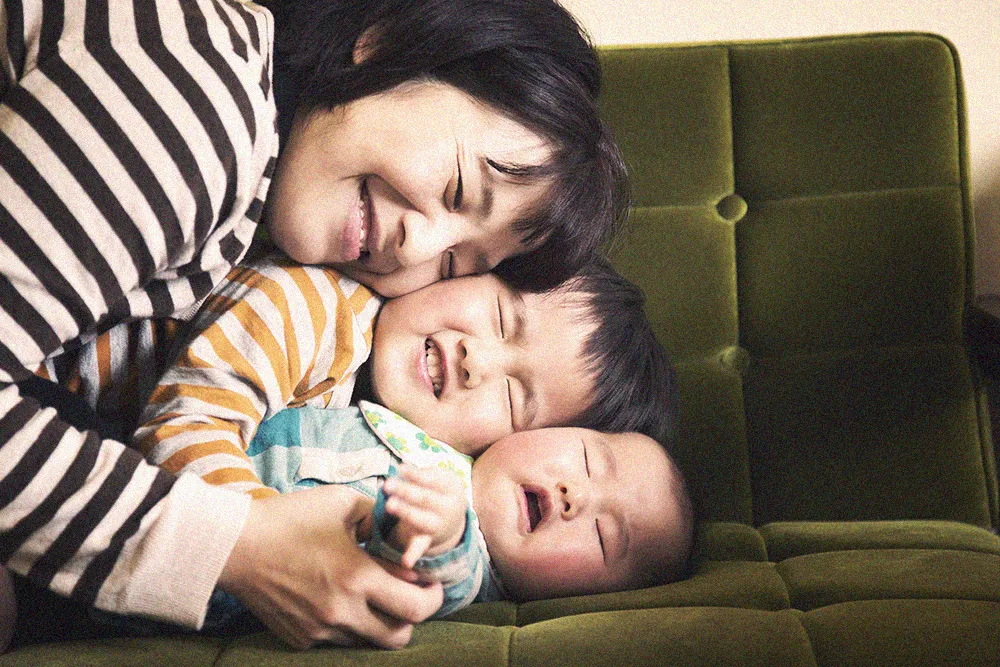FAQs >
Should parents save children’s cord blood?
Once-in-a-lifetime Opportunity
Precious Gift of Children
Cord blood is rich of Hematopoietic Stem Cells
A lifelong guard insurance for children himself and family
Most Asked Questions by Parent
Questions asked by parent when considering the cord blood banking.
Download Cord Blood & Cord Lining Leaflet
Keep staying with us to explore the powerful stem cells
Latest Promotions & Offers
Exclusive offers for client enrol HealthBaby service today!
Most Asked Questions by Parents
Cord blood has significant medical value and be used widely in transplant medicine. Also, cord blood is regarded as “The First Gift” from God to a baby. Collecting cord blood is a once-in-a-lifetime opportunity at the time of delivery.
In 1988, a 5-year-old French boy suffering from Fanconi’s Anemia successfully received transplantation of his younger sister’s cord blood, which was the first clinical application of cord blood and aroused worldwide enthusiasm about cord blood storage. At present, up to 113 diseases5,6 including cancers, blood-related, immunity and metabolic disorders can be treated by cord blood. There are also over 5 successful cord blood transplant cases over the world. Over 90 cord blood transplant cases were performed in Hong Kong, which included both children and adults.
According to the guideline (February 2008 issue) of The American Congress of Obstetricians and Gynecologists2, doctors are recommended to provide balanced and accurate information of cord blood banking to expectant parents, as well as the advantages and disadvantages of public versus private cord blood banking. 27 states, cover 81% new born in U.S., even imposed legislations to mandate doctors to educate expectant parents about all forms of cord blood banking. It shows the importance of cord blood banking and its medical values.
Cord blood has signi cant medical value and be used widely in transplant medicine. Cord blood is also regarded as ” e First Gift” from God to a baby. Collecting cord blood is a once-in-a-lifetime opportunity at the time of delivery.
- Pure: Less polluted by radiation, viruses and medicines
- Regenerative: High regenerative power
- Easily Available: Obtain from placenta and umbilical cord, no medical risk to mother and infant
- Ready-to-use: Immediately usable after thawed, no searching time is needed
- Low Rejection: The recipient is at lower risk of complications by cord blood transplant, no rejection for own use and low rejection when donating to others
- Easier to Match: No need to be perfect matched, transplant can be done when 4/6 HLA typing matched
- Lower Cost for Collection: Cord blood belongs to the target customer, therefore no need to spend a huge amount of money for searching and purchasing
- Perfect matching: 100% match, no matching is needed and without any rejection after transplantation
Details of banking cord blood please refer to Why Storing Cord Blood.
Cord blood and umbilical blood contain two different stem cells which are widely adopted in different medical aspects. Cord blood is a rich source of HSCs which can create the blood and immune cells. Cancers, blood-related, immunity and metabolic diseases can be treated by cord blood. Umbilical cord is a rich source of MSCs which can create structural and connective tissues. Apart from minimizing GvHD in directed and unrelated allogeneic cord blood transplants, MSCs can apply to chronic illnesses treatment, regenerative medicines as well as organ and tissue engineering. Since cord blood and umbilical cord are rich sources of different types of stem cells, they may help to repair the body in different ways.
Until June 2016, up to 113 diseases had been treated with cord blood transplants5,6. They could be divided into 7 categories, namely: Leukemia, Lymphomas, other Disorders of Blood Cell Proliferation, Inherited Disorders of Immune System, Inherited Metabolic Disorders, other Cancers and others.
Detail about 113 treatable disease please refer to Diseases Treated by Cord Blood Transplantation.
Stem cells will stop all physiological activities and remain dormant in -196℃ liquid nitrogen. Therefore, the stem cells can be permanently stored theoretically19. Professor Hal E. Broxmeyer (microbiology and immunology) is a pioneer who advocates of cord blood stem cells cryogenic storage. He proved that stem cells stored for years were still very regenerative, indicating that the stem cells stored in 1985 and 1986 could still be applied to patients for transplant33.
On the contrary, there is no factual basis for the claim of stem cells being able to store permanently under -135℃. Noted that using the vapor nitrogen storage system would cause temperature fluctuation upon stem cells storage and thawing and seriously affect the viability of all samples’ stem cells.
Almost all public cord blood banks, including worldwide large blood banks, use liquid nitrogen for stem cells storage.
Entrusted by most parents in Hong Kong1, Healthbaby has a very comprehensive service coverage. Apart from the traditional liquid nitrogen storage plan, HealthBaby also pioneered to provide the advanced BioArchive® System. All storage plan of HealthBaby adopts the expensive liquid nitrogen as storage medium to provide the most stable tempertature for stem cell viability, providing the most quality umbilical cord and cord blood storage service.
To cater for different needs of clients, HealthBaby’s cord blood and umbilical cord storage plan have very flexible and comprehensive service plan. Regarding cord blood plan, clients could select the storage plan base on the storage and processing system needs.
The umbilical cord and cord blood service fee already includes registration fee, processing fee and 18 years storage fee, no any additional charge during the contracted year. Extra discounted would be provided for registering both umbilical cord and cord blood storage plan. HealthBaby existing customers and other cord blood bank customers could also enjoy special offers. Please contact us for deatils and any enquiries.
For more details of cord blood service plan please refer to Service Plan.
Storing Cord Blood To Provide Life- long Family’s Health
Storing every child’s cord blood could provide the biggest guard to every child:
- Every child’s stem cell is unique. Although cord blood could treat 113 diseases5,6, some inherited diseases could not be treated by own cord blood. In this respect, siblings’ (with consanguinity) cord blood is the most possible source to treat the disease.
- Research shows that, 1 in 200 people by age 70 may need stem cells transplant4
Cord blood transplantation can be categorized into 3 types: autologous transplants, related allogeneic transplants and unrelated allogeneic transplants:
- Autologous transplants: 臍帶血是來自孩子本身,使用臍帶血用作移植時,白血球抗原配對率為 100%。但假若孩子本身所患的疾病屬遺傳性疾病便不能用自身的臍帶血作醫治。
- Related allogeneic transplants: 由於臍帶血並非來自自身,所以當兄弟姊妹需要使用孩子的臍帶血用作移植時,需先進行白血球抗原配對測試,其配對成功率約 25%-50%。
- Unrelated allogeneic transplants: 使用非血緣關係的臍帶血進行移植。
Cord blood collection is very simple and won’t cause any harm to both mother and baby. Cord blood is collected after baby delivery and the umbilical cord has been clamped and cut, thus it is safe and causes no pain to the mother and baby.
For more details of steps of cord blood collection please refer to Cord Blood Collection Process.
Family history should not be served as the only indicator because most forms of leukemia and fatal disease are not hereditary, without any sign when they arise.
- Based on research, 1 in 200 people by age 70 may need stem cell transplant4.
- At present, there are over 5 cord blood transplants worldwide5. Up to 113 diseases can be treated by cord blood. Therefore, we should save cord blood to protect the health of baby and family members.
For more advantage of storing cord blood, please refer to What is Cord Blood.
At present, cord blood stem cells can be used to treat leukemia, lymphoma and other blood disorders but not inherited diseases. Therefore, may be it is not necessary to store the cord blood of the baby who has an inherited genetic disorder. However, the rate of biomedical technology development is unpredictable; in the future there might be a break through with cord blood stem cells application such as cell therapy, tissue engineering and regenerative medicine. These technologies will be applied in clinical use when they are fully established.
Thus, storing the precious cord blood is still worthwhile.
HealthBaby Hong Kong is the cord blood bank with the most transplant cases in Hong Kong. 2 children suffered from cerebral palsy and 1 child suffered from neuroblastoma were successfully treated by cord blood they saved at HealthBaby upon birth, 1 more child suffered from Fanconi’s Anemia successfully used related allogeneic cord blood for transplantation.
For more successful transplant case details, please refer to Most successful cord blood transplant cases in Hong Kong.
Both bone marrow and cord blood are the source of HSCs and are able to kill cancer cells in allogeneic transplants, provided that matched samples can be obtained. According to Red Cross Hong Kong, the chance to find an unrelated donor with perfectly matched bone marrow is only 1/5000 to 1/10,000. In contrast, cord blood is easier to be matched and the successful rate is between 25% to 50% in siblings and no need for matching in autologous transplant. Therefore, the number of bone marrow transplants has been dropped more than half and the use of double cord blood transplant has become a new trend.
Since public hospitals are facing the medical staff shortage, they are unable to collect umbilical cord at this moment. If expectant parents decide to bank the umbilical cord, it is required to deliver baby at the following private hospitals in order to enjoy HealthBaby service.
Including Canossa Hospital, Hong Kong Adventist Hospital, Hong Kong Baptist Hospital, Hong Kong Sanatorium & Hospital, Matilda International Hospital, Gleneagles Hong Kong Hospital, Precious Blood Hospital (Caritas), St. Paul’s Hospital, St. Teresa’s Hospital, Tsuen Wan Adventist Hospital, Union Hosiptal, Conde S. Januario General Hospital and Kiang Wu Hospital.
Every client’s cord blood and umbilical cord usage is not limited to Hong Kong region. HealthBaby can send the cord blood and umbilical cord to overseas region as long it is legal at the destination.
Please contact us for more details.
當使用臍帶血作移植時,必須先確定捐贈者和病人之白血球抗原配對的脗合性和相容性。臍帶血只需要 4 對抗原脗合即可進行移植,而骨髓則需要 6 對抗原全部脗合。
與骨髓比較,臍帶血在來源、收集、排斥反應及副作用等方面都較理想。
有關臍帶血及骨髓的詳細比較可以瀏覽臍帶血、臍帶及骨髓比較
Ways to Store Cord Blood
There are two ways to store cord blood in Hong Kong, including private storage and public donation.
- Private storage: Storing the cord blood at private cord blood bank for future transplantation use when needed.
- Public donation: Donate the cord blood to public blood bank to help people in need. (Applicable to specific hospitals only)
If neither private storage or public donation is chosen, the cord blood will be discarded as clinical waste.
Not all Hong Kong hospitals can collect cord blood for donation, Hong Kong Red Cross only provides cord blood donation service at Queen Elizabeth Hospital, Kwong Wah Hospital, Prince of Wales Hospital, United Christian Hospital and Pamela Youde Nethersole Eastern Hospital.
For more details of cord blood donation, please refer to Hong Kong Red Cross.
Hong Kong Red Cross will assign the cord blood received to people in need, which means the donor will lose the priority in using it. Once the cord blood is donated to Hong Kong Red Cross, you can not ask for return for any personal reason.
Private storage can ensure the child and his family members are able to use the cord blood when they need it for transplantation promptly.
If you decide to donate the cord blood to Hong Kong Red Cross, you can download the Cord Blood Donation Registration Form at Hong Kong Red Cross website and deliver at the designated hospital.


